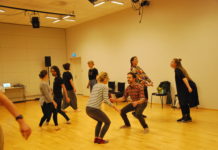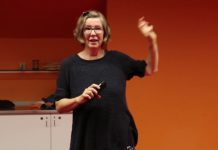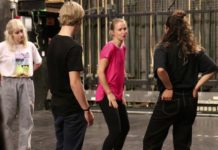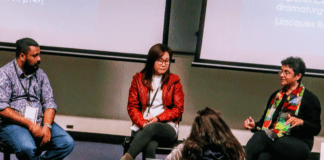Theatre offers us, I believe, a space to express what cannot be said through words alone. Perhaps that is why I now find words to be insufficient in order to capture my experience of watching Rite of Spring (produced by Maas Theater and Dance & Flat Foot Dance Company, and directed by Moniek Merkx).

My own response to this production was undoubtedly mediated by my individual experiences as a woman. I am sure that my interpretation of this abstract Performance would be very different to that of the person sat next to me. Nevertheless, for me, Rite of Spring’s intricate narrative – conveyed through movement, costume, and music, with only minimal text – illustrated the duplicitous roles and expectations that women face in today’s society.
“I really think it’s a physical process to become a woman […] for me it’s very important not to use too many words and not explain but to experience the process […] I want to represent all those different roles that are in ourselves.” – Moniek Merkx, Director

Incorporating both Theatre & Dance, a symbolic and figurative aesthetic was successfully used to depict the tumultuous and transformational journeys of Young Women into womanhood. In using symbolic language, Rite of Spring offered the chance for Young Audience Members to develop their own meanings and interpretations around the complex issues of sexuality, identity and social media.
This sense of there being no right or wrong answer, just different perspectives, pervaded the whole piece. So whilst the narrative implied a degree of commonality amongst women, the journeys of the eight characters remained distinct from one another. Even in the post-show discussion, the Director encouraged the Young People in the audience to think for themselves, by responding to some of their questions with “what do you think?”

The eight Performers’ commitment, strength and vulnerability astounded me from beginning to end. As an ensemble, their collective yet distinct energies enriched my experience as an audience member. They asserted authority through their frank, honest gaze, which invited me to question how my own perceptions and judgment could be influenced by hegemonic attitudes and expectations within society.
As they watched the piece, many of the Young People in the audience seemed to look puzzled, but in an engaged and thoughtful way. Leaving the Performance space, some of the responses I heard from the audience were: “Wow,” “Exciting,” “Interesting,” “Provocative,” “Confusing,” “Powerful,” “Different,” “Extreme,” “Beautiful,” and “Deep.”
Overall, it seemed to me like the performance really opened up a space to engage in deeper, more critical reflections of the Self and its relation to societal expectations.It was visceral experience but one which I believe will continue to grow in significance over time and with further thought.









